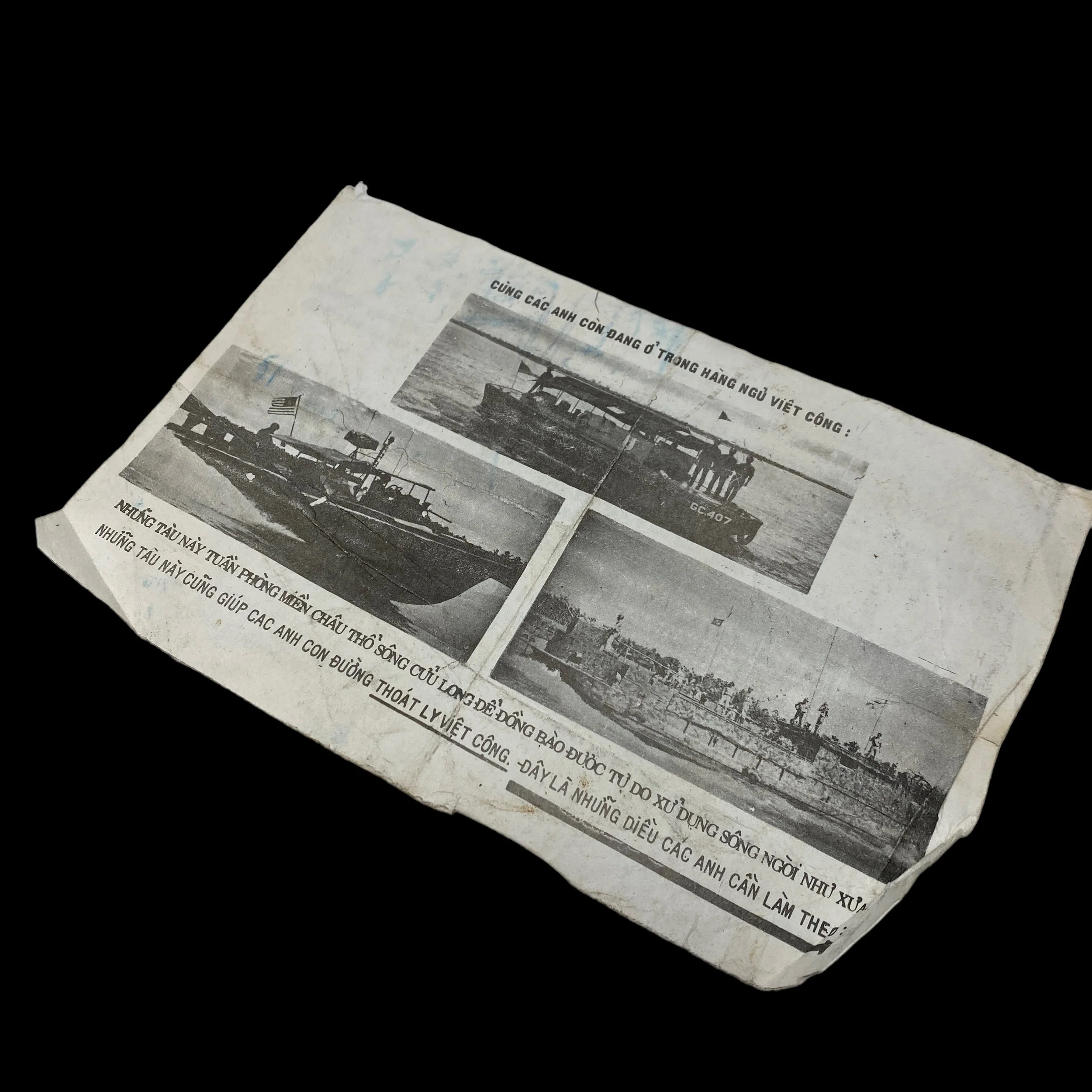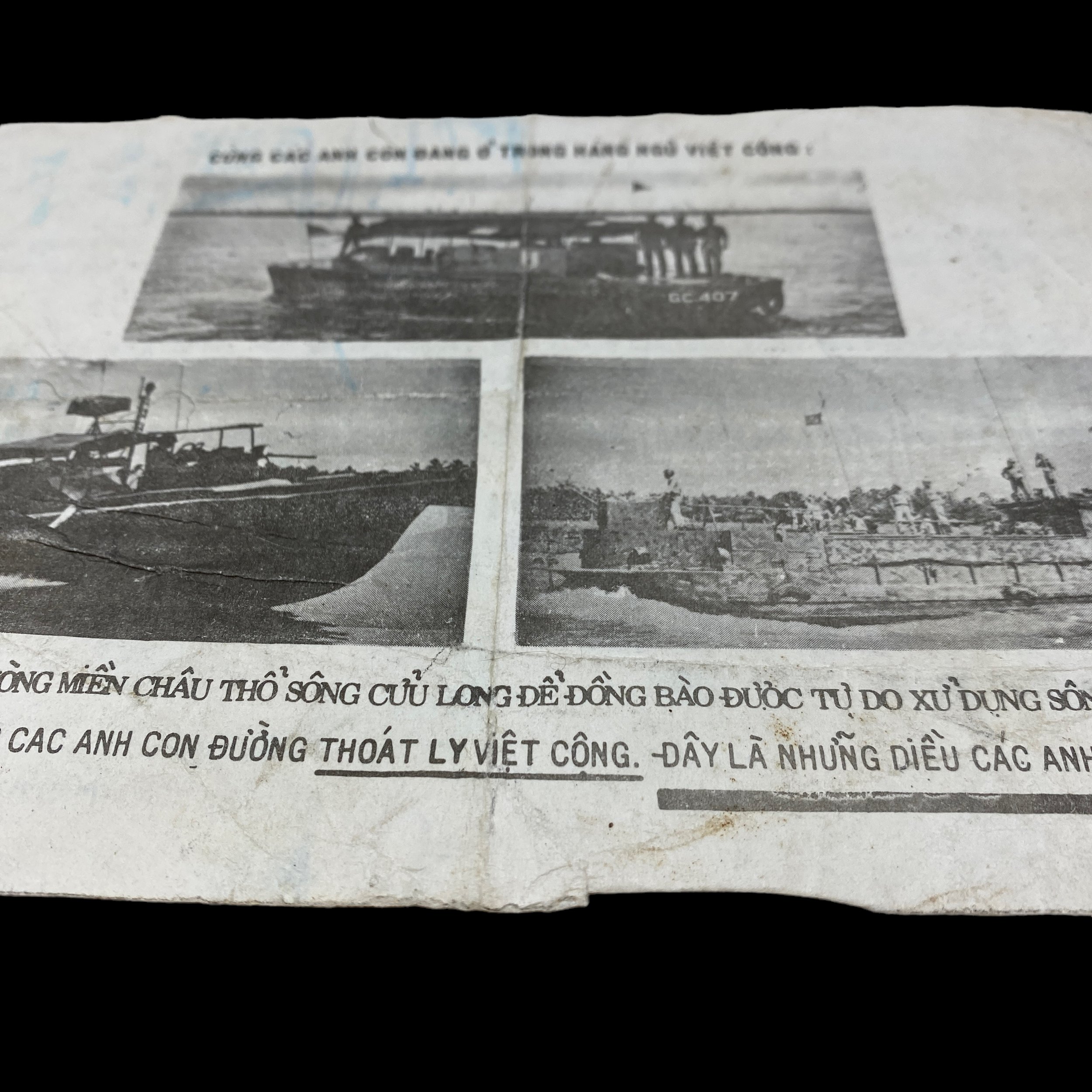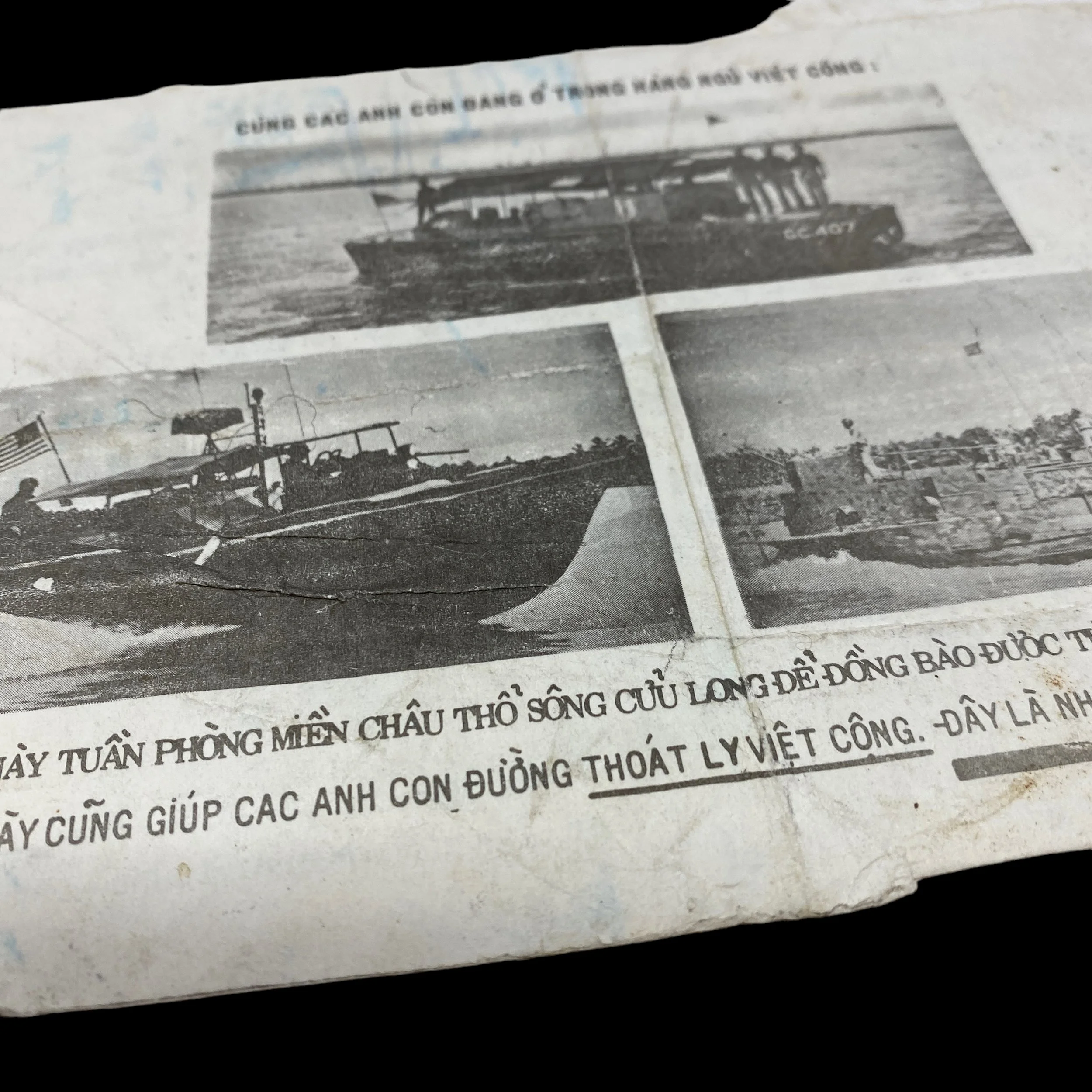RARE! Vietnam War 1967 19th PSYOP Company Patrol Boat River PBR Viet-Cong Leaflet


























RARE! Vietnam War 1967 19th PSYOP Company Patrol Boat River PBR Viet-Cong Leaflet
Comes with hand-signed C.O.A. and full historical write-up
“On 19 November 1966 it was deployed to Can Tho Vietnam as part of the 6th PSYOP Battalion to provide advice and support to military units and agencies in the Mekong Delta in IV Corps Tactical Zone. In the first nine months in Vietnam, the 19th PSYOP Company participated in 26 operations, Personnel took part in 1,500 aerial missions and conducted over 400 hours of aerial loudspeaker broadcasts.”
This incredibly rare and museum-grade Vietnam War 1967 leaflet was dropped by American aircraft over known Viet-Cong positions. This very rare “Patrol Boat River” leaflet was printed by the 19th PSYOP Company; and deployed to Can Tho, Vietnam, on 19 November 1966 to provide advice and support in IV Corps. This leaflet is one of the few leaflets dropped during the Vietnam War that depicts the infamous American PBR, Command Control Boat (CCB), and “Landing Craft Personnel” or “Higgins Boat.”
Because of the wet, humid, and overall poor conditions of Vietnam, only a small handful of original combat-dropped aerial leaflets like this are known to still exist. This 19th PSYOP Company leaflet was picked up and was a bring-back of a U.S. Vietnam War soldier who found it while on patrol near the rivers, these were dropped.
Partial Translation:
TO THOSE FRIENDS WHO ARE STILL WITH THE VIET CONG
The patrolling water-craft on the Mekong delta are for:
Helping citizens to travel the waterways easier
Giving the Viet Cong cadres less chances to escape
The US Patrol Boat River (PBR) played a crucial role in the Vietnam War, particularly in the Mekong Delta region. These small, agile vessels became synonymous with the American military's efforts to control the waterways and interdict the movement of Viet Cong insurgents and North Vietnamese forces. The PBRs, while often overshadowed by more prominent aspects of the war, were instrumental in a unique style of warfare, blending the challenges of guerrilla warfare and naval operations.
The Mekong Delta, with its intricate network of rivers and canals, presented an immense challenge for the United States during the Vietnam War. The North Vietnamese and Viet Cong used these waterways to transport troops, weapons, and supplies to support their insurgency. Recognizing the need for a specialized vessel to patrol these waterways, the US Navy developed the PBR.
The Development of the PBR
The concept of the PBR began to take shape in the early 1960s. The boats were primarily based on the fiberglass-hulled Boston Whaler, a versatile and shallow-draft design ideal for riverine operations. The first PBRs were deployed to Vietnam in 1966, and they quickly became an indispensable asset in the fight against the insurgency.
Design and Specifications
The PBR was a unique vessel designed for the specific challenges of riverine warfare. These boats were approximately 31 feet long, with a shallow draft that allowed them to operate in water as shallow as 2.5 feet. They were powered by twin diesel engines, which provided the speed and maneuverability necessary for their mission. The boat's armament typically included a combination of M2 .50-caliber machine guns and MK18 grenade launchers, which were highly effective in engaging enemy forces along the riverbanks.
Role and Missions
The primary role of the PBR was river interdiction. These boats patrolled the waterways to identify, locate, and engage enemy forces. PBR crews were tasked with conducting search and destroy missions, as well as providing intelligence for larger military operations. They would often encounter enemy forces hidden in the dense jungle along the riverbanks or ambushing from concealed positions.
Challenges and Combat Environment
Patrolling the rivers of the Mekong Delta was not without its challenges. The dense vegetation provided ample cover for the enemy, making ambushes common. The PBR crews had to navigate through narrow canals, avoiding underwater obstacles and explosive traps set by the Viet Cong. The ever-present threat of landmines and booby traps in the water added an element of danger to their missions. Moreover, the hot and humid climate took a toll on both the boats and the men who operated them.